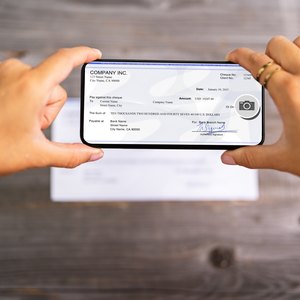
Considering the role they continue to play, you’d think the history of checks would be more widely understood. But scholars have a good idea of where checks began and how they evolved. Checking may have its ancient roots in India, but the Romans, Persians and Muslims (inventors of the check-like sakk) helped develop a written order instructing bankers to pay money to third persons, notes Fin. Further, the Persian poet Ferdowsi used the term cheque around 1000 AD.
However, the modern era of checking began in Venice, Italy, about 800 years ago.
Quick History of Checks
13th-century Venice was a hotbed of European commerce. The city’s international trade had previously depended on the exchange of large amounts of physical gold and silver, an increasingly impractical arrangement. Venetian bankers developed a written device known as a bill of exchange to pay out money without needing precious metals. In the early 1500s, cashiers in Amsterdam, Holland accepted money deposits for a fee and paid money out to third parties on written instructions from the depositor.
Soon the practice spread throughout Europe. In 17th-century England, bankers trafficked in bills of exchange, known as drawn notes, to make domestic payments. Individuals could present the notes to their banks for immediate payment. These notes became cheques in 1717 when the Bank of England began to preprint and number them on cheque paper (to deter forgeries), and individuals could draw cheques from the bank’s cashiers and cash them there as well.
Formal procedures to clear cheques for payment began around 1770, when bankers met daily in the City of London's Five Bells Tavern, forming the first clearinghouse. The practice spread across England and arrived in America in 1784 when Alexander Hamilton established the Bank of New York. In 1811, the Commercial Bank of Scotland printed personalized customer checks, and the Bank of England issued stitched cheque books in 1830.
The next hundred years saw governments formalize laws regarding cheques, interrupted by the First World War. By 1959, magnetic ink character recognition (MICR) made checks machine-readable in the U.S., leading to automated check routing and clearing, explains the Corporate Finance Institute. The widespread use of checks as a non-paper money method of payment prevailed until the early 1990s.
Evolution and Decline of Checks
Electronic payments increasingly displaced paper checks in the 1990s and the turn of the 21st century, aided by the development of the debit card. By 2010, the banking systems of several countries had phased out checks, and the process continues today.
Modern payment methods include debit and credit cards, direct deposits, wire transfers, mobile check deposits, online banking and ATMs. Walden University explains that digital options save time and are safer. Compared to electronic payments, checks are slow, expensive, prone to fraud and difficult to process. Therefore, they are dying out.
However, checks remain relatively widespread in a few countries, including France, Ireland and to a lesser degree, Italy. They remain niche products when other payment forms are impractical or not used. For example, some small service providers don’t want to give customers their account numbers and additional banking information necessary for electronic payments. Sometimes, writing a check and handing (or mailing) it to another person is the simplest way to make a cashless payment.
How Checks and Their Decline Impact Your Personal Finances
Americans have many ways to make payments without traditional checking accounts or check processing. Many online banks do not offer checks, instead distributing debit cards for point-of-sale transactions. Prepaid debit cards support cashless payments but do not require bank accounts.
Workers and Social Security recipients are likely to receive payments via ACH direct deposits to bank accounts or prepaid cards. PayPal, Apple Pay, Venmo and other payment services operate primarily without checks.
The implication to consumers is clear: Learn the new ways to move cash and put your checkbook in cold storage. Doing so will save money, provide faster payments, avoid paper check fraud and allow automated e-payments and reconciliation.
References
Writer Bio
Eric Bank is a senior business, finance and real estate writer, freelancing since 2002. He has written thousands of articles about business, finance, insurance, real estate, investing, annuities, taxes, credit repair, accounting and student loans. Eric writes articles, blogs and SEO-friendly website content for dozens of clients worldwide, including get.com, badcredit.org and valuepenguin.com. Eric holds two Master's Degrees -- in Business Administration and in Finance. His website is ericbank.com.

